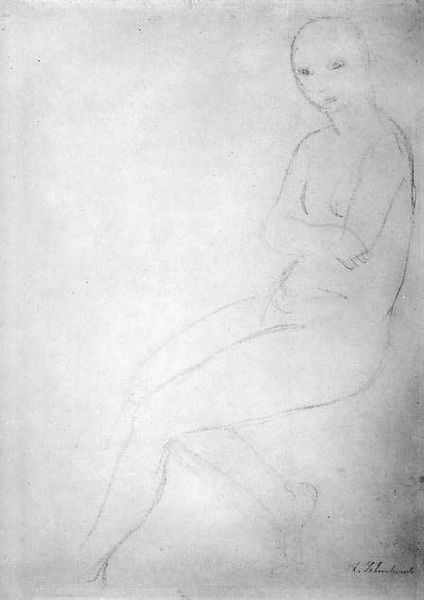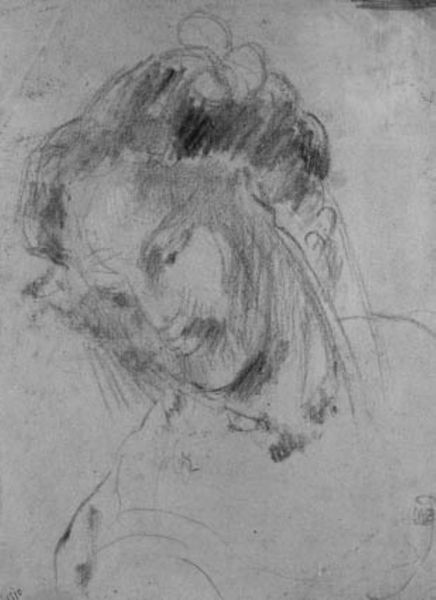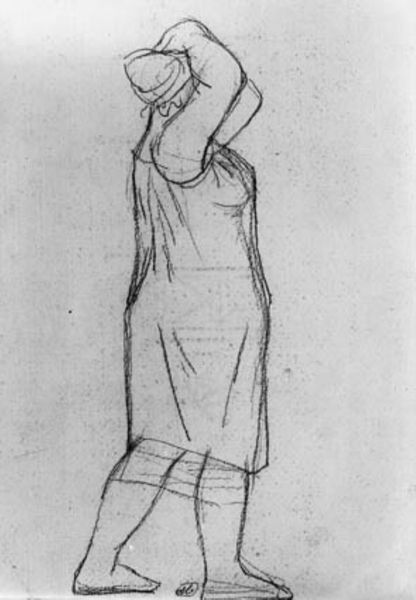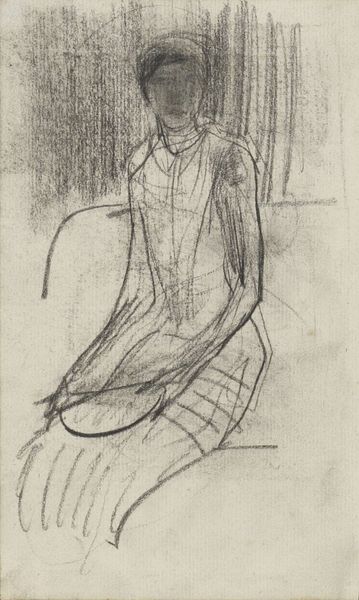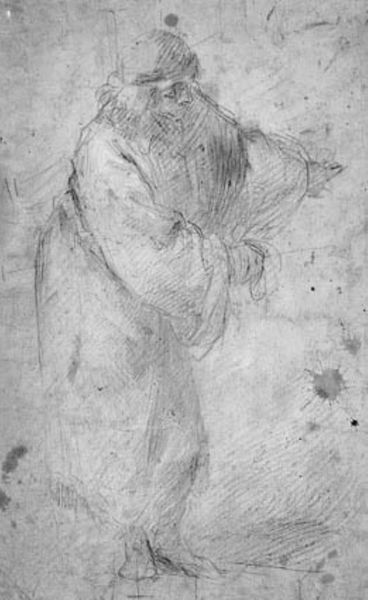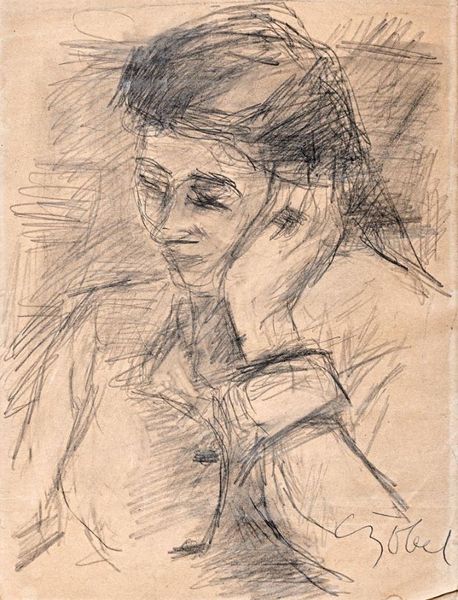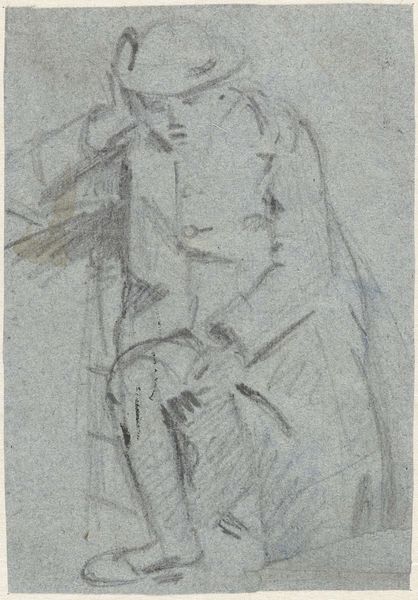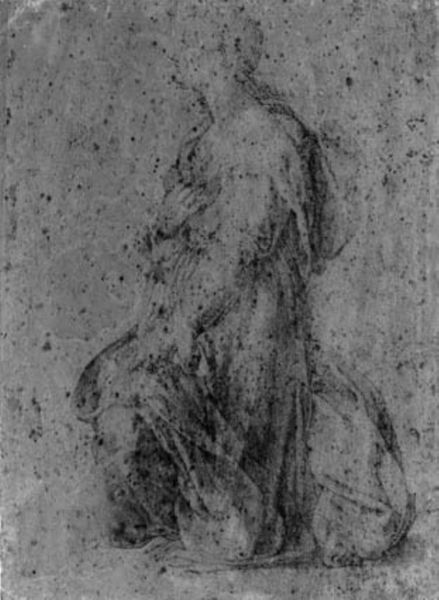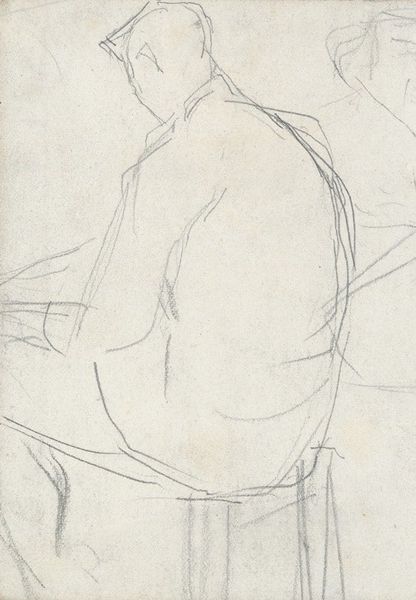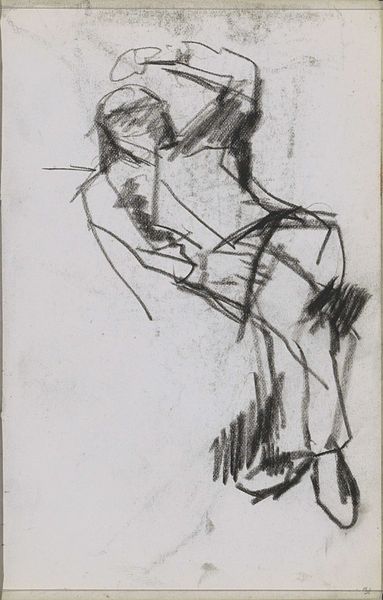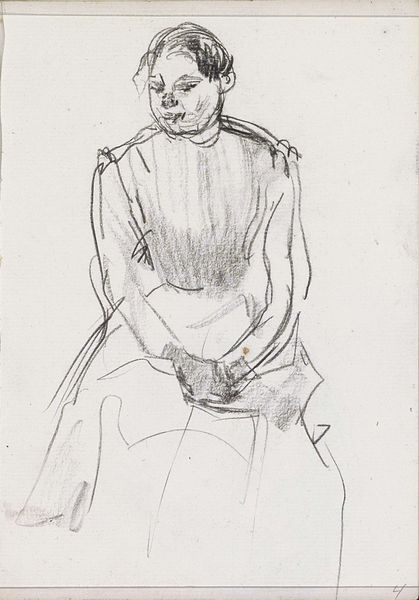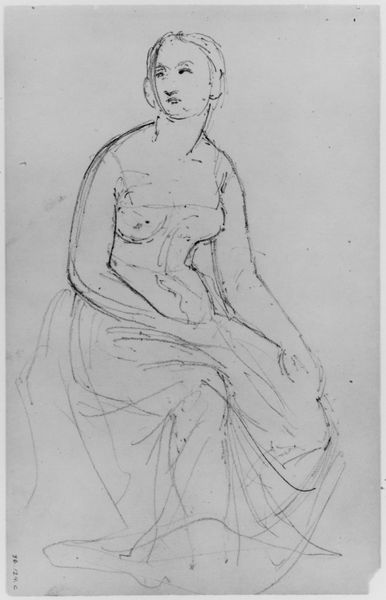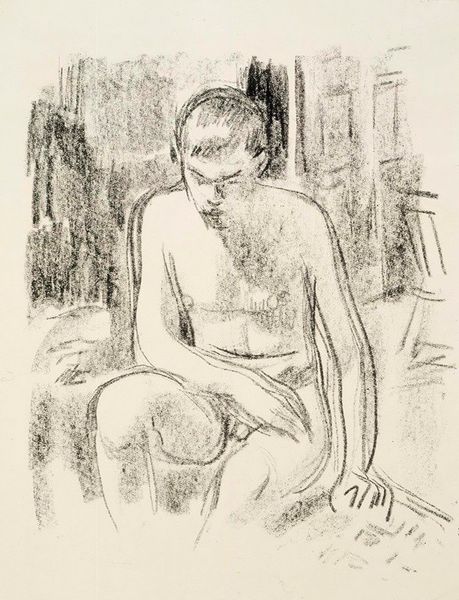
Portræt af en siddende ung pige med hænderne i skødet. Annie Bjarne 1919
0:00
0:00
drawing, pencil
#
portrait
#
drawing
#
figuration
#
pencil
#
expressionism
#
modernism
Dimensions: 386 mm (height) x 205 mm (width) (bladmaal)
Curator: Let’s take a look at this work, entitled "Portræt af en siddende ung pige med hænderne i skødet. Annie Bjarne," a pencil drawing by Amedeo Modigliani, created in 1919. It's currently housed here at the SMK, Statens Museum for Kunst. Editor: It’s haunting, isn’t it? The pale, undefined face staring off…it gives me the chills a little. Curator: Well, consider how Modigliani often depicted the eyes of his subjects, or lack thereof. He said he would paint the eyes when he knew the soul. What might it say about the subject that the face is only lightly developed in this sketch? What of her place in post WWI Europe and as part of the Modernist artistic vanguard of Paris? Editor: True, and that’s so central to his visual language. Look at the simplification of form here – the elongated neck, the basic geometry shaping her torso. It pushes past mere representation. This rendering, almost an abstraction, amplifies the work’s quiet unease. Curator: Perhaps that sense of unease springs from something deeper. Take note of her posture. The hands are clasped demurely, but the hunched shoulders suggest a kind of introversion, a world of experience that the artist only attempts to capture a glimpse of, in only pencil. Editor: The starkness is further emphasized by the grid behind her that's likely on the original sketch paper itself. It creates a framework against the apparent spontaneity of the gesture. How do those formal qualities, the medium and line work specifically, impact our understanding? It lends it that immediacy that pencil as a medium lends. Curator: Ultimately, it’s a piece that invites us to consider not just the sitter, but the artist’s own state of mind at that historical juncture and artistic development, as he sought to define new parameters for the representation of the human form and what’s unsaid about the subject he presents. Editor: Indeed. It's this dance between the visible and invisible, the tangible and the ineffable, that really resonates here. Thanks for exploring with me!
Comments
No comments
Be the first to comment and join the conversation on the ultimate creative platform.
